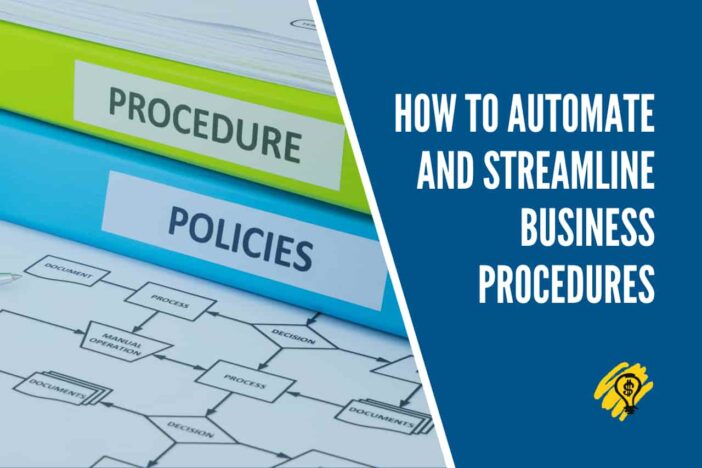There’s no better way to get started with streamlining your business than to automate and automate as much as possible. With the rise of information technology, businesses of all kinds have been able to automate processes, reduce costs, and make better use of their time.
Efficiency is the key to running a successful business and, without it, it’s unlikely that you will be able to turn a profit. The health crisis has proven just how important it is to make every penny last by automating and streamlining your business procedures.
Procedures are the foundation of most business operations. From creating new customer relationships to closing a deal, procedures are vital to any successful operation. So, it’s no surprise that automating and streamlining business procedures is a top priority for business owners today. But, automating and streamlining can be a tricky affair, especially for small businesses with limited resources.
If you’re a business owner looking to maximise profits and minimise losses, keep reading, this is the article for you!
Analyse Current Systems
Before you can make any changes, you’ll need to identify the areas in which you can improve. Don’t rush this part, it’s important that you have a very clear understanding of the areas that are underperforming. You can also hire an external auditor to come in and help, as they will have less bias.
Automate Wherever Possible
If there’s a part of your business that you can automate, you should go ahead and do so. This way, you can free up valuable time from your employees that can be better used elsewhere. For example, printing labels or inputting data can be two very time-consuming processes. Not to mention, they both suffer from a great deal of human error. Minimise any mistakes and free up time for your employees by automating your procedures.
Use Supportive Software
In our day and age, there is practically software to fit any kind of need. For example, if you are a carpenter, you can make use of cabinet software to help you customise dimensions and automate procedures. We don’t suggest that you go out and purchase every kind of software that exists, however, be open to the idea and see what compliments your business operations the best.
Communicate New Methods
Once you begin implementing your new changes you should hold a meeting for all your employees. Make sure that everyone is aware of the new methods you have adopted and provide training for members of staff that may need it. It’s unlikely that things will run smoothly if only a few members of staff know what is actually going on.
Ask Employees for Feedback
Your employees are the ones that will know how things are going and what could be improved, therefore it’s imperative that you ask for their feedback. There are several ways that you can do this, including an anonymous survey. Anonymity is very useful in these circumstances because employees will be as honest as they can.
Adjust and Refine Processes
Furthermore, it’s important that you remain flexible with your new changes. You may need to adjust some of the practices before you get to a stage that feels seamless. All in all, it’s important that you regularly review your business.
Most things in life are constantly in flux and the same goes for your business. The practices that were most efficient four or five years ago may not stand as well today. Develop a schedule to audit and review your business practices so that you can always benefit from the most up-to-date and efficient business procedures.



